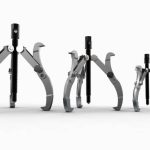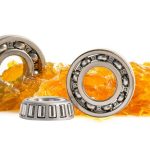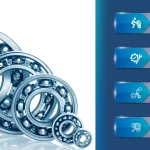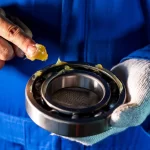The Vital Role of Bearings in Healthcare Technology
Innovations in healthcare technology rely heavily upon precision engineering, to ensure the accuracy, reliability, and safety of medical devices and equipment that patients are exposed to. Good quality bearings, although often overlooked, are paramount in achieving these standards by providing smooth and precise motion control in various medical applications.
From diagnostic imaging systems to surgical equipment and even modern day prosthetics, bearings enable the precise movement and functionality of critical healthcare devices, contributing to advancements in patient care and treatment.
Precision in Diagnostic Imaging Systems
Diagnostic imaging systems, such as MRI machines, CT scanners, and ultrasound devices, rely on precise motion control for capturing detailed images of the human body. Bearings, particularly precision bearings like ceramic or hybrid bearings, are utilized in the gantry systems of these imaging devices to ensure smooth rotation and accurate positioning of the imaging components.
The high precision and stability provided by bearings are essential for obtaining clear and accurate diagnostic images, aiding healthcare professionals in diagnosing and treating medical conditions effectively.
Here are examples of diagnostic imaging systems and their corresponding applications where NBC Bearings may be used:
Magnetic Resonance Imaging (MRI) Machines:
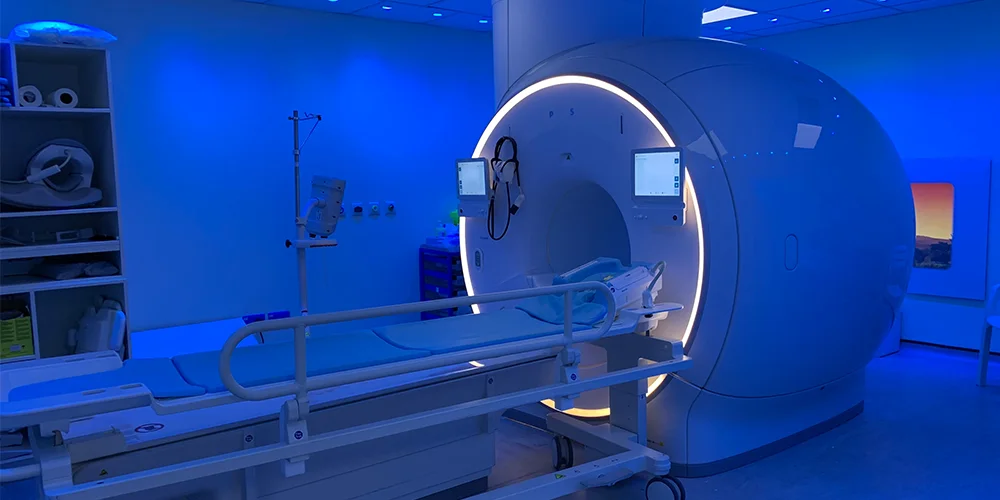
- Application: Gantry Rotation
- Bearings Used: Ceramic Hybrid Bearings or Stainless Steel Bearings
Computed Tomography (CT) Scanners:
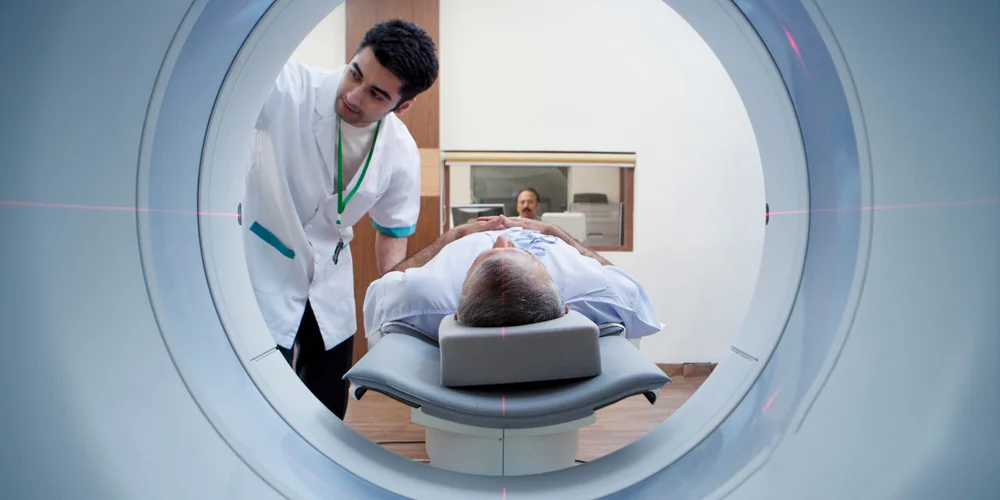
- Application: Gantry Rotation and Table Movement
- Bearings Used: Angular Contact Ball Bearings or Tapered Roller Bearings
Ultrasound Machines:
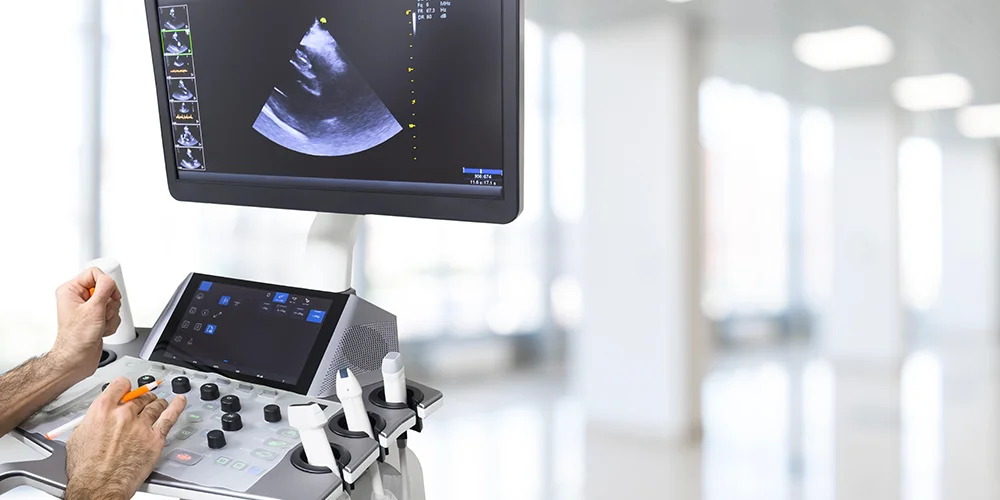
- Application: Transducer Movement and Scanning Mechanism
- Bearings Used: Radial Ball Bearings or Linear Bearings
These NBC bearings are engineered to provide high precision, durability, and reliability in demanding medical imaging applications, ensuring smooth operation and accurate diagnostic results.
Surgical Equipment and Robotics
In surgical procedures, precision and accuracy are critical for successful outcomes and patient safety. Bearings play a vital role in surgical equipment, including robotic surgical systems, laparoscopic instruments, and microsurgical devices.
Miniature bearings with high precision and low friction properties enable the precise movement of surgical tools and robotic arms, allowing surgeons to perform complex procedures with enhanced dexterity and control. Their smooth and reliable motion helps in minimizing tissue trauma, reducing recovery times, and improving patient outcomes.
Some examples of robotic surgical equipment and their corresponding applications where NBC Bearings may be used:
Robotic Arm Manipulators:
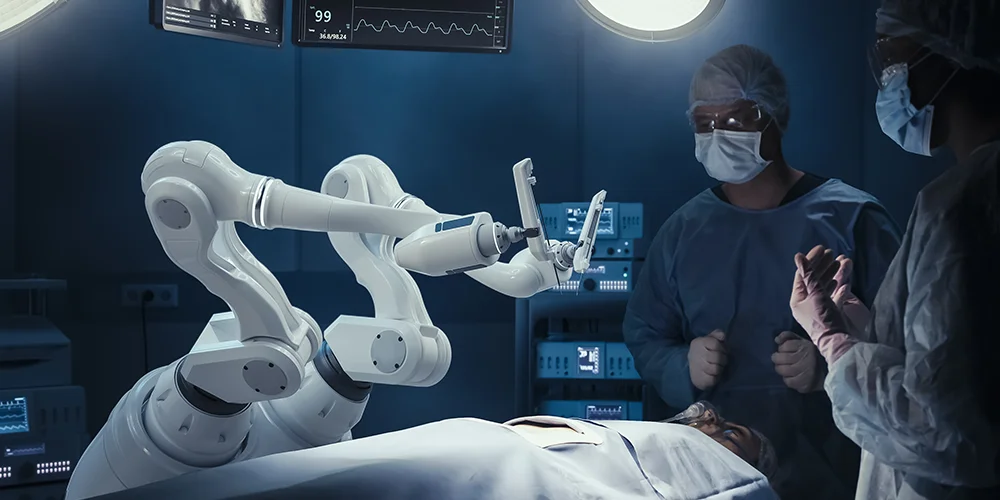
- Application: Joint Articulation and Movement
- Bearings Used: Angular Contact Ball Bearings or Crossed Roller Bearings
Surgical Robot End Effectors:
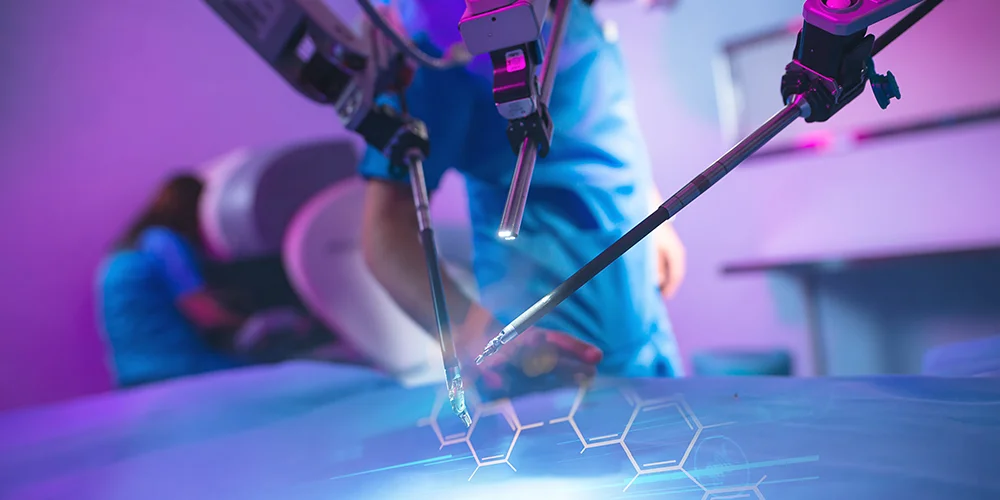
- Application: Instrument Manipulation and Tool Handling.
- Bearings Used: Thrust Bearings or Needle Roller Bearings.
Robotic Surgical Platforms:
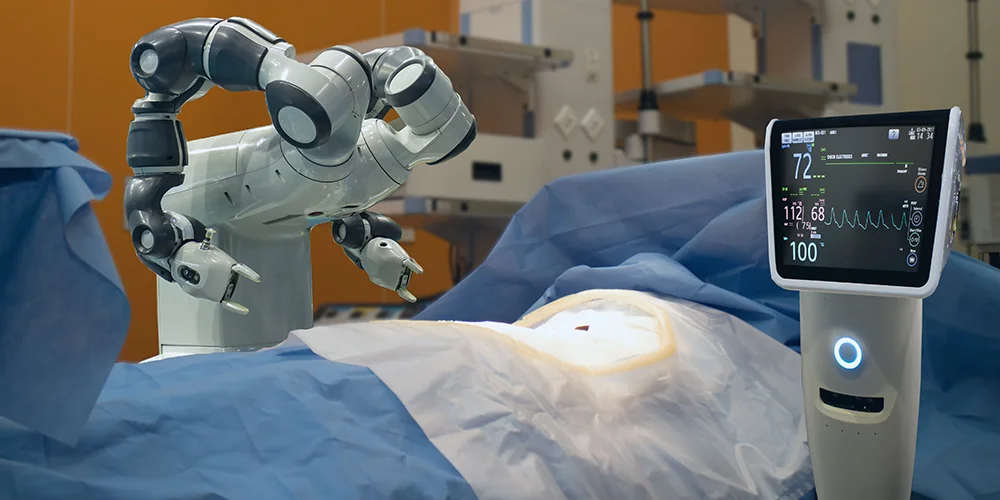
- Application: Patient Positioning and Surgical Assistance,
- Bearings Used: Linear Bearings or Spherical Roller Bearings.
These NBC bearings are designed to meet the stringent requirements of robotic surgical systems, offering precise motion control, low friction, and long service life to ensure optimal performance and safety during surgical procedures.
Prosthetics and Orthopedic Devices
Bearings are integral components in prosthetic limbs, orthopedic implants, and joint replacement systems, where they facilitate smooth articulation and movement.
In orthopedic devices such as knee and hip implants, bearings made of biocompatible materials like titanium or ceramic ensure durability, stability, and long-term functionality.
By providing low friction and wear-resistant properties, bearings enhance the mobility and comfort of patients with prosthetic or orthopedic devices, restoring their quality of life and mobility. Here are some examples:
Artificial Limbs:
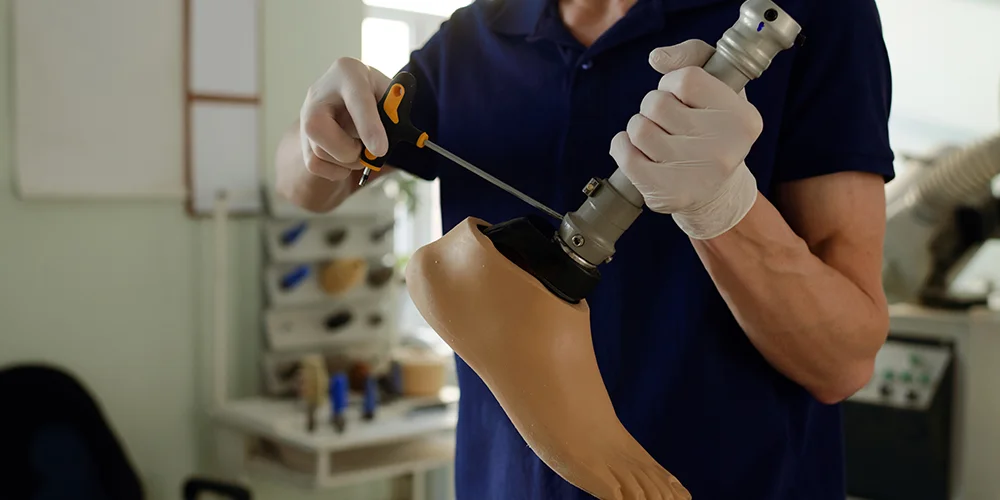
- Application: Joint Movement and Mobility
- Bearings Used: Thrust Bearings or Spherical Plain Bearings
Orthopedic Implants:
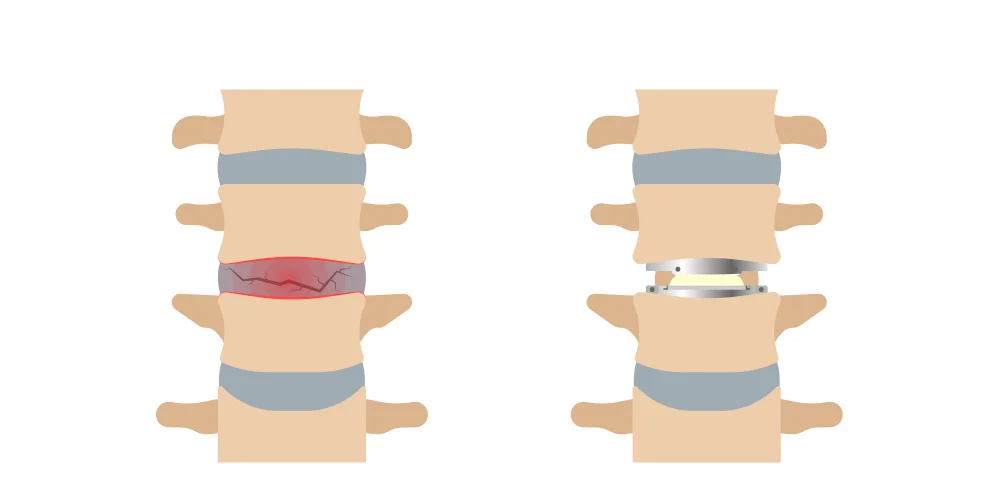
- Application: Joint Replacement and Support.
- Bearings Used: Radial Ball Bearings or Roller Bearings.
Orthotic Devices:
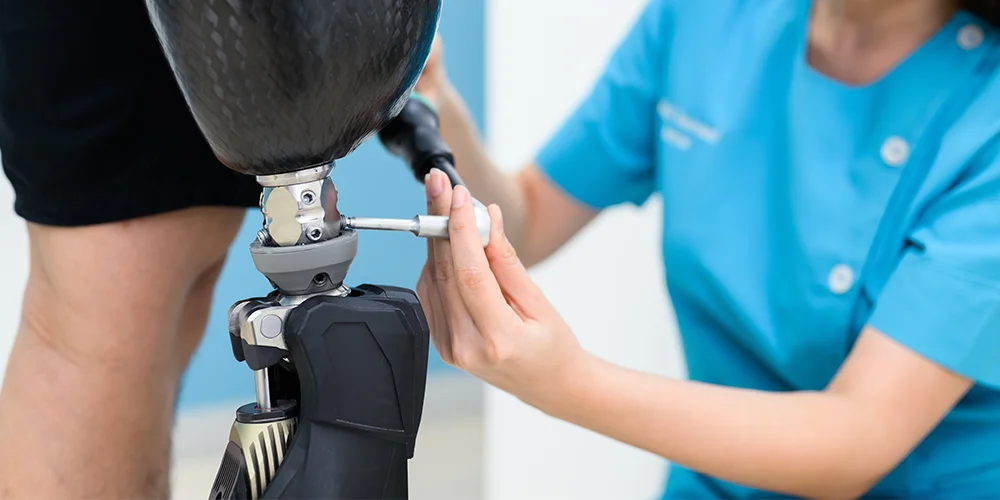
- Application: Support and Alignment Correction.
- Bearings Used: Linear Bearings or Bushings.
NBC bearings are engineered to provide smooth and reliable movement in prosthetic limbs and orthopedic devices, enhancing patient comfort and mobility. Their high precision, durability, and biocompatibility make them ideal for critical applications in the medical field.
Drug Delivery Systems
Precision bearings also play a crucial role in drug delivery systems, including infusion pumps, insulin pumps, and implantable drug delivery devices. These devices rely on precise control of fluid flow and dosage accuracy to administer medications to patients safely and effectively.
Bearings with high precision and low torque characteristics ensure smooth operation and accurate dosing, minimizing the risk of over or under-medication and enhancing patient care and treatment outcomes. Here are examples of drug delivery devices where NBC Bearings may be utilized:
Infusion Pumps:
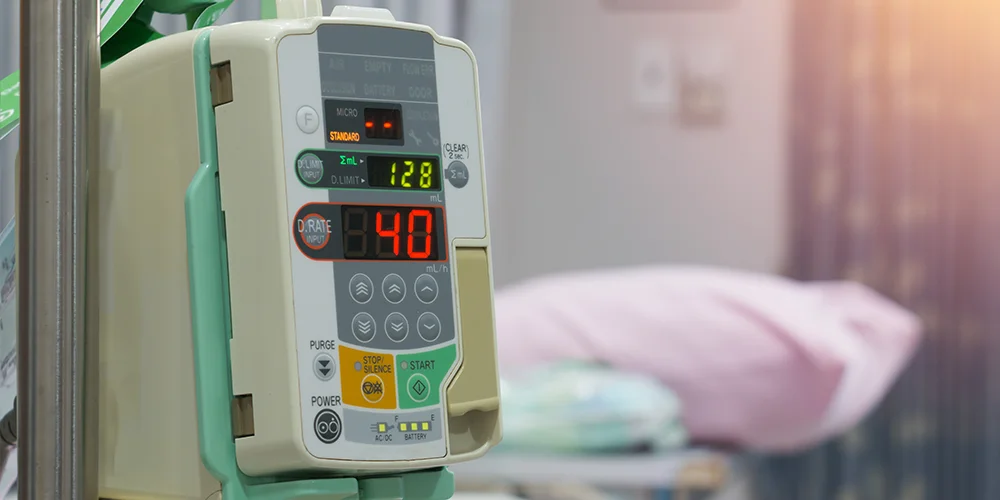
- Application: Precise Fluid Control and Delivery.
- Bearings Used: Miniature Ball Bearings or Needle Roller Bearings.
Inhalers and Nebulizers:
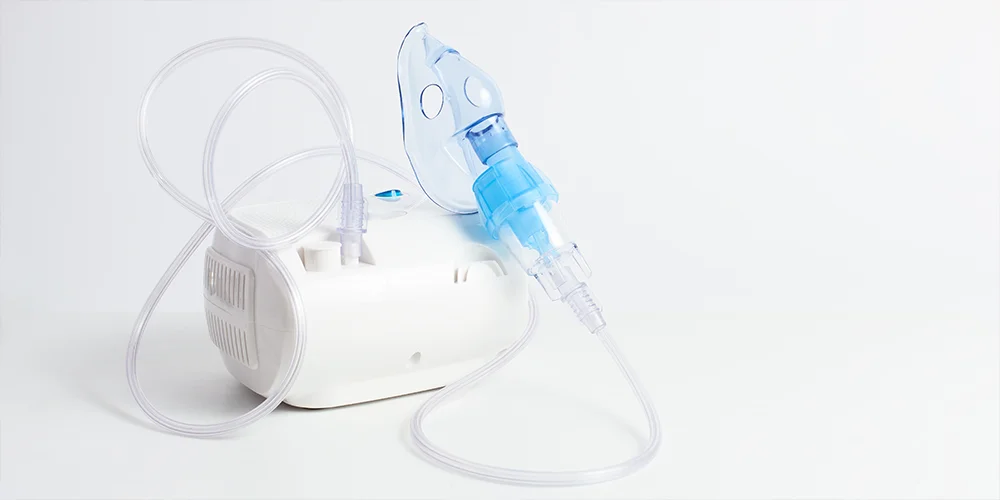
- Application: Controlled Dispersion of Aerosolized Medication.
- Bearings Used: Thrust Bearings or Angular Contact Ball Bearings.
Insulin Pumps:

- Application: Continuous and Precise Insulin Delivery.
- Bearings Used: Roller Bearings or Ball Bearings.
NBC Bearings are selected for their precision, reliability, and smooth operation, ensuring consistent performance in drug delivery systems. Their low friction and high load-bearing capacity contribute to the efficiency and effectiveness of these critical medical devices, ultimately benefiting patient care and treatment outcomes.
In conclusion, bearings are indispensable components in the medical industry, driving precision engineering and innovation in healthcare technology. From diagnostic imaging systems to surgical robots and drug delivery devices, bearings enable the precise motion control and functionality of critical medical equipment, ultimately contributing to advancements in patient care and treatment. As healthcare technology continues to evolve, bearings will remain at the forefront, pioneering precision and reliability in healthcare advancements.
FAQ's
What types of bearings are used in medical devices?
Medical devices utilize a variety of bearings, including ball bearings, roller bearings, and specialty bearings such as ceramic or hybrid bearings, depending on the specific application requirements.
Are medical bearings different from regular bearings?
Medical bearings are often manufactured to higher precision and quality standards, using materials that are compatible with medical environments and regulations to ensure safety and reliability in healthcare applications.
What role do bearings play in medical imaging systems?
Bearings enable smooth rotation and precise positioning of imaging components in medical imaging systems, ensuring accurate diagnostic imaging and patient diagnosis.
How do bearings contribute to surgical precision in robotics?
Bearings facilitate precise movement and articulation of robotic surgical systems, allowing surgeons to perform complex procedures with enhanced dexterity and control, leading to improved surgical outcomes and patient safety.
Why are precision bearings crucial in drug delivery systems?
Precision bearings ensure accurate dosing and fluid control in drug delivery systems, minimizing the risk of medication errors and enhancing patient safety and treatment outcomes in healthcare settings.
How do bearings contribute to patient care and treatment in the medical field?
Bearings enable the precise motion control and functionality of critical medical devices and equipment, supporting accurate diagnostics, surgical procedures, drug delivery, and mobility assistance, ultimately improving patient care and treatment in the medical field.





